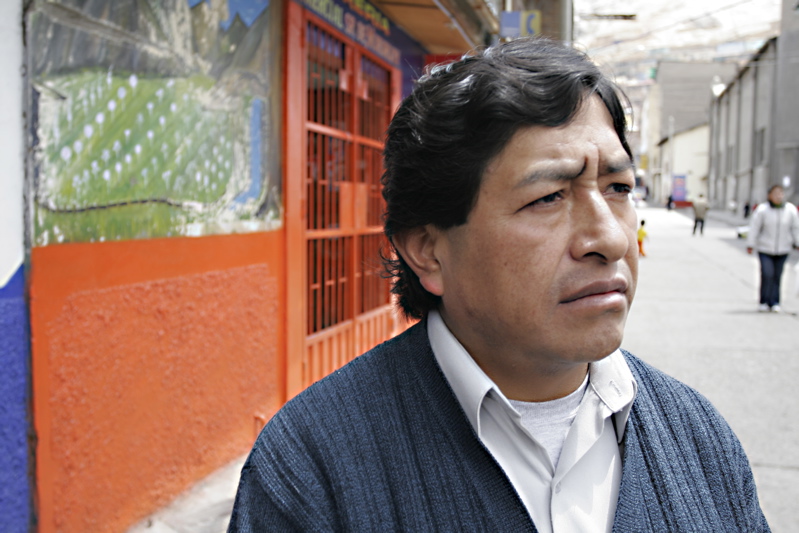
In 2007, I traveled to Peru to profile a worker at the La Oroya multi-metal smelting complex for Homelands’ WORKING series. La Oroya was known as one of the most polluted places on Earth, and I wanted to spend time with someone who had made the decision to stay despite the well-documented dangers.
I had passed through La Oroya many times when I lived in Peru in the 1990s and always wondered how hard it must be to weigh the promise of a regular paycheck against the risks of living in one of the unhealthiest environments imaginable. It was a choice that working people around the world were forced to make.
Finding a subject turned out to be much harder than I’d imagined. No one I spoke with (including leaders of the largest labor union) wanted to talk about the downsides of working or living there. People were afraid that if the world really understood how dangerous it was, the government would force the smelter to shut down and everyone would be out of a job.
In my reporting, I learned about the high levels of lead in children’s blood and the way in which toxic clouds would settle on the city, making residents of the hillside shantytowns more vulnerable than workers in the plant. But everyone seemed to want me to go away.
Finally I found Pedro Córdoba, a 47-year-old mechanic who was suffering from a debilitating lung disease caused by years of inhaling rock dust. He was angry and wanted to vent. I felt a little uncomfortable profiling a person whose views were so different from those of most of his coworkers. But his story was true and I felt a responsibility to highlight the terrible trade-off so many people need to make between meeting their economic needs and maintaining their health.
On March 22 of this year, 17 years after I visited and 18 years after the complaint was first filed, the Inter-American Court found Peru responsible for failing to protect La Oroya’s residents from toxic pollution for more than a century. This is how Earthjustice reports on the findings:
In the judgment, the Court ordered the State of Peru to adopt comprehensive reparation measures for the damage caused to the population of La Oroya, including identifying, prosecuting and, where appropriate, punishing those responsible for the harassment of the victims; determining the state of contamination of the air, water and soil and preparing an environmental remediation plan; providing free medical care to the victims and guaranteeing specialized care to residents with symptoms and illnesses related to contamination from mining and metallurgical activities; ensuring the effectiveness of the city’s warning system and developing a system for monitoring the quality of air, water, and soil; ensuring that the operations of the La Oroya Metallurgical Complex comply with international environmental standards, preventing and mitigating damage to the environment and human health; providing monetary compensation to victims for material and non-material damages.
I hope Pedro Córdoba was alive to hear the verdict.
— Jonathan Miller